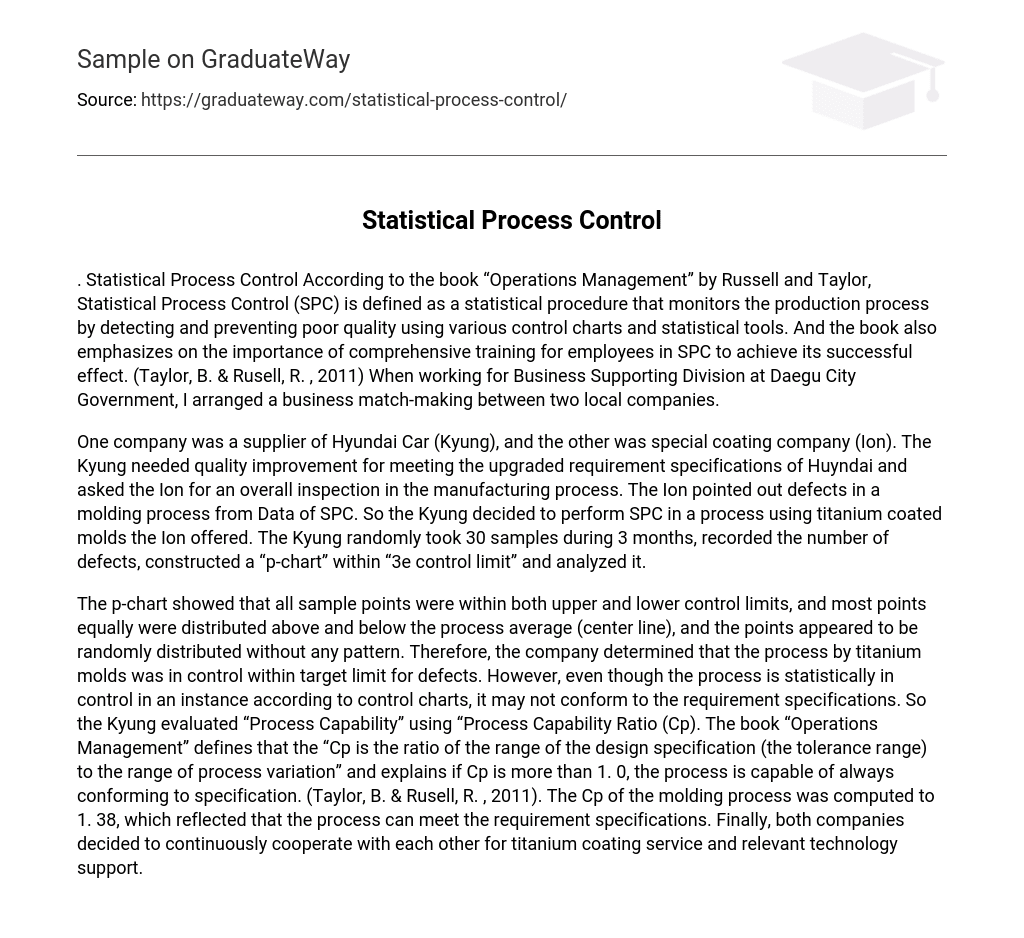. Statistical Process Control According to the book “Operations Management” by Russell and Taylor, Statistical Process Control (SPC) is defined as a statistical procedure that monitors the production process by detecting and preventing poor quality using various control charts and statistical tools. And the book also emphasizes on the importance of comprehensive training for employees in SPC to achieve its successful effect. (Taylor, B. & Rusell, R. , 2011) When working for Business Supporting Division at Daegu City Government, I arranged a business match-making between two local companies.
One company was a supplier of Hyundai Car (Kyung), and the other was special coating company (Ion). The Kyung needed quality improvement for meeting the upgraded requirement specifications of Huyndai and asked the Ion for an overall inspection in the manufacturing process. The Ion pointed out defects in a molding process from Data of SPC. So the Kyung decided to perform SPC in a process using titanium coated molds the Ion offered. The Kyung randomly took 30 samples during 3 months, recorded the number of defects, constructed a “p-chart” within “3e control limit” and analyzed it.
The p-chart showed that all sample points were within both upper and lower control limits, and most points equally were distributed above and below the process average (center line), and the points appeared to be randomly distributed without any pattern. Therefore, the company determined that the process by titanium molds was in control within target limit for defects. However, even though the process is statistically in control in an instance according to control charts, it may not conform to the requirement specifications. So the Kyung evaluated “Process Capability” using “Process Capability Ratio (Cp). The book “Operations Management” defines that the “Cp is the ratio of the range of the design specification (the tolerance range) to the range of process variation” and explains if Cp is more than 1. 0, the process is capable of always conforming to specification. (Taylor, B. & Rusell, R. , 2011). The Cp of the molding process was computed to 1. 38, which reflected that the process can meet the requirement specifications. Finally, both companies decided to continuously cooperate with each other for titanium coating service and relevant technology support.





